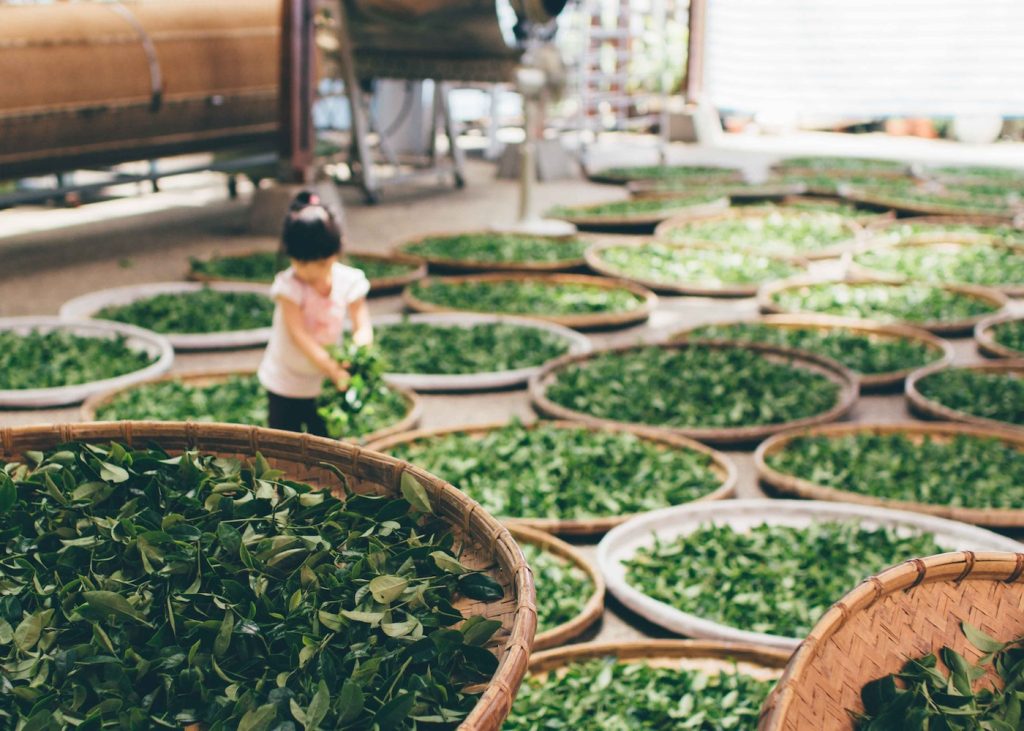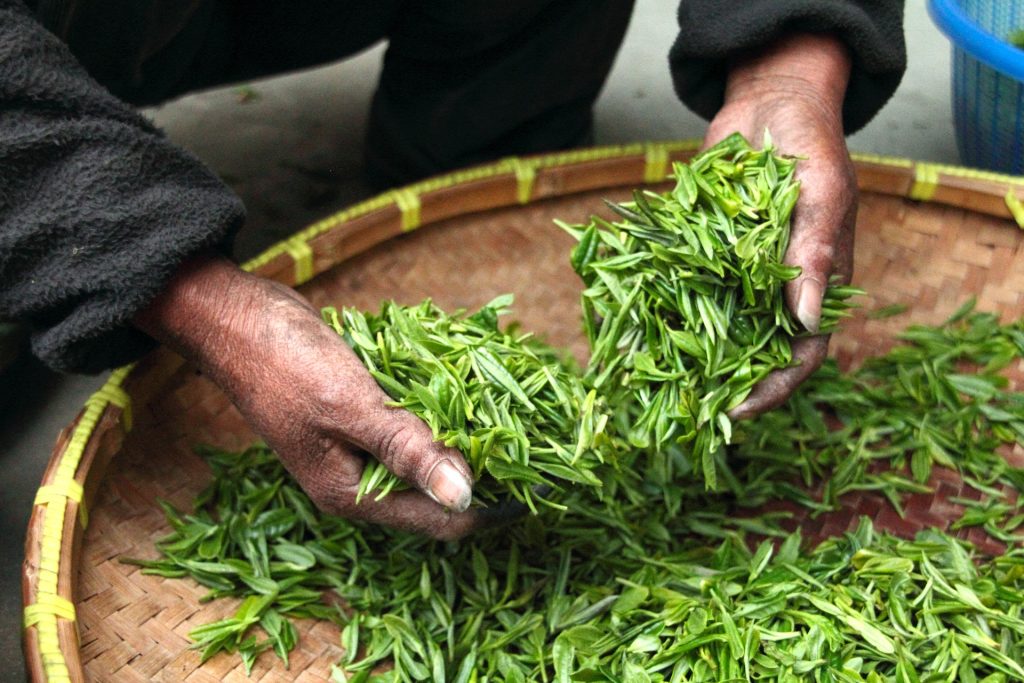The raw tea leaves that are dried in the sun after being greened and twisted are collectively referred to as “sun-dried green hair tea”. The unique Pu-erh tea in Yunnan must be dried in the sun to be Pu-erh.
Sun-green, as the name suggests, is raw tea that has been dried in the sun. Sun-green refers to the drying method of raw tea, not the method of greening. The usual production process of Pu-erh tea is: picking – spreading fresh – greening – spreading cool – rolling – drying, sun-drying is drying after rolling.
The important difference between drying greens and other drying methods such as frying greens and baking greens is “temperature”. The drying process of frying greens and baking greens is high in temperature, which basically cuts off the life of enzyme active substances in tea leaves. Sunshine, low temperature, retains the growth possibility of active substances, the shape of dried tea is loose, black, and the dried tea has obvious sun-dried taste, which presents the fresh aroma of natural flowers and plants. After brewing, the aroma is long-lasting and tastes good Pure.

Drying green also creates potential vitality for the long-term storage of Pu-erh tea to “get better with age”.
What needs to be explained here is that “sun drying” does not necessarily mean “sun drying”. When it is rainy or cloudy, drying or drying in the shade will also be considered, but it must be low temperature, which is the key , It is generally considered that it does not exceed 60 degrees. Although the low-temperature drying method of drying green tea takes a long time, it retains the original flavor and active substances of the tea.
Ensuring a suitable low temperature is an important difference between Pu-erh tea and green tea in terms of craftsmanship. Green tea uses high-temperature curing to quickly enhance its aroma, but subsequent storage cannot achieve the “more and more fragrant” of Pu-erh tea. It can only be consumed within a limited time, otherwise Tea soup stored for a long time will lose its taste and lose its value, while Pu-erh tea is a product of slowness and time, which also includes “slow workmanship and careful work” in the production process.
Roasting green tea and baking green tea belong to the production process of green tea. The purpose of both is to use high temperature to stop the fermentation process of tea leaves. The difference is that one is fried in a high-temperature iron pot, and the other is directly baked at high temperature. Stir-fried green refers to the method of withering the tea leaves in a pot with low heat in the process of making tea leaves. Through manual rolling, the water in the tea leaves evaporates quickly, blocking the fermentation process of the tea leaves, and completely retaining the essence of the tea juice.

The fresh green tea leaves are greened, kneaded, and then dried, which is called baked green tea. Green roasting belongs to high-temperature drying, and the tea leaves often have high aroma. Therefore, some merchants have mixed roasted and dried tea leaves in Pu-erh tea to enhance the aroma of tea leaves, but it is not good for the later transformation of Pu-erh tea. Therefore, consumers choose Be cautious when purchasing.
Baked green and fried green tea cannot be used as raw materials for Pu-erh tea, and should not be used for processing Pu-erh tea. Due to the aging and “fermentation” of Pu’er tea, it mainly depends on the auto-oxidation of sun-dried green tea itself, the enzymatic oxidation of polyphenols, and the action of microorganisms.
Due to the high drying temperature of baked and fried green tea, polyphenol oxidase is inactivated and destroyed, and when dry tea is dried at high temperature and quickly, polyphenol oxidase is further destroyed. The water content is low, and “natural aging” cannot be completed, so it is not suitable for processing into Pu’er tea.

